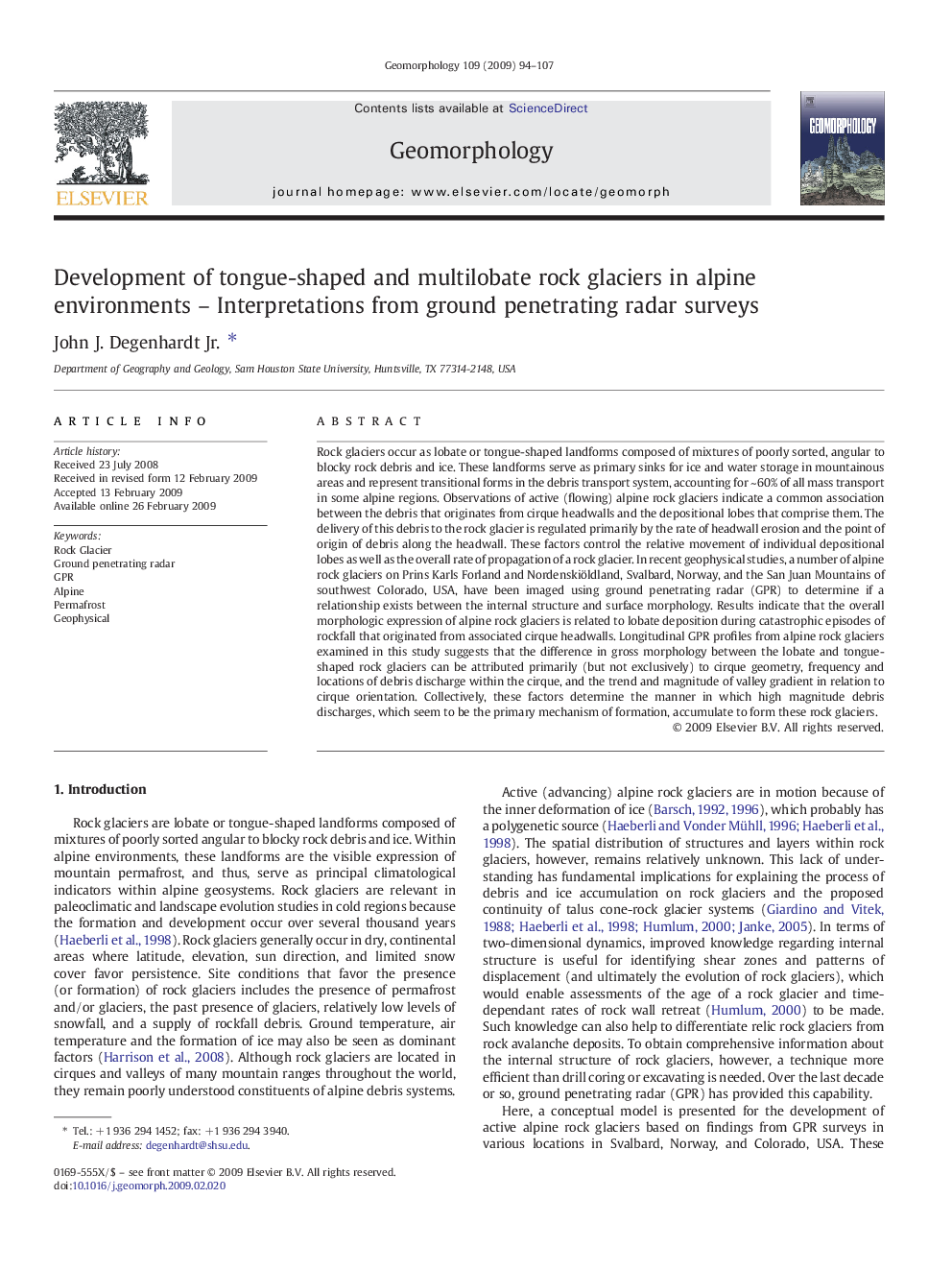| کد مقاله | کد نشریه | سال انتشار | مقاله انگلیسی | نسخه تمام متن |
|---|---|---|---|---|
| 4686357 | 1635539 | 2009 | 14 صفحه PDF | دانلود رایگان |

Rock glaciers occur as lobate or tongue-shaped landforms composed of mixtures of poorly sorted, angular to blocky rock debris and ice. These landforms serve as primary sinks for ice and water storage in mountainous areas and represent transitional forms in the debris transport system, accounting for ~ 60% of all mass transport in some alpine regions. Observations of active (flowing) alpine rock glaciers indicate a common association between the debris that originates from cirque headwalls and the depositional lobes that comprise them. The delivery of this debris to the rock glacier is regulated primarily by the rate of headwall erosion and the point of origin of debris along the headwall. These factors control the relative movement of individual depositional lobes as well as the overall rate of propagation of a rock glacier. In recent geophysical studies, a number of alpine rock glaciers on Prins Karls Forland and Nordenskiöldland, Svalbard, Norway, and the San Juan Mountains of southwest Colorado, USA, have been imaged using ground penetrating radar (GPR) to determine if a relationship exists between the internal structure and surface morphology. Results indicate that the overall morphologic expression of alpine rock glaciers is related to lobate deposition during catastrophic episodes of rockfall that originated from associated cirque headwalls. Longitudinal GPR profiles from alpine rock glaciers examined in this study suggests that the difference in gross morphology between the lobate and tongue-shaped rock glaciers can be attributed primarily (but not exclusively) to cirque geometry, frequency and locations of debris discharge within the cirque, and the trend and magnitude of valley gradient in relation to cirque orientation. Collectively, these factors determine the manner in which high magnitude debris discharges, which seem to be the primary mechanism of formation, accumulate to form these rock glaciers.
Journal: Geomorphology - Volume 109, Issues 3–4, 15 August 2009, Pages 94–107